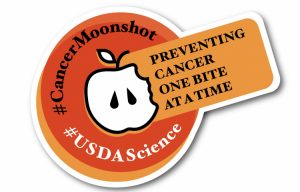Environment
Short Takes
Georgia’s new data center rule increases local controlDecember 1, 2025

By David Pendered
Aug. 10 – The Biden administration talked Wednesday about research that aims to devise and produce foods so nutritious they can help prevent cancer and lower health care costs. A related challenge to improve diets involves overcoming food deserts.
The U.S. Department of Agriculture named Wednesday as a Day of Action in its support of Biden’s Cancer Moonshot program. This is the relaunched version of the cancer-fighting program effort Biden headed when he was President Obama’s vice president. Biden announced Feb. 2 his initiative to reduce the death rate from cancer by at least 50% over the next 25 years and to improve the quality of life for those living with cancer, and those who care for and about people with cancer.

The USDA’s best practices in agriculture and science were discussed in two webinars Wednesday. The keynote presentation is available here, at Preventing Cancer One Bite at a Time.
The webinar had nothing to do with dietary tips – take fruit instead of a donut. Instead, it was a snapshot of current scientific efforts to improve the quality of nutrition of foods provided to consumers.
The topic of food deserts was not discussed. Most of metro Atlanta is a food desert, including many of the region’s more affluent neighborhoods. On Wednesday, the focus was not obstacles to deliver healthy food to consumers, but the processes of creating foods that can help people delay or avoid cancer and enjoy a healthier quality of life.
Presenters discussed the ways in which the nature of food produced in the United States is changing, and how scientists are trying to determine how the molecules of food interact. The idea is for folks to eat foods in combinations that produce the best health outcomes.
Patrick Stover described one aspect of the effort, precision nutrition, that aims to determine the molecular makeup of foods. Stover serves as vice chancellor of Texas A&M Agrilife and dean of the College of Agriculture and Life Sciences.
Precision nutrition is part of the emerging effort to replace a food model established to overcome hunger. In the Great Depression, hunger was the problem and in World War II the nation’s foods were prioritized for hungry soldiers, Stover said.

“Agriculture was scaled to prevent hunger, and was scaled by producing calories. So, ‘Abundant. Affordable, and accessible,” Stover said. “Now we have a new expectation for food. We need to feed a burgeoning population, but we also have inappropriate diets.”
Janet Novoty, a USDA research physiologist, talked about a mammoth trove of information on the nutritional aspects of foods that’s maintained by the USDA’s FoodData Central. The resource contains a compilation of nutrients and other components of food, similar to the descriptions on food containers but at a massive scale. The site gets over 1 million views a year, she said.
A snippet of the description from the data center’s FAQ page offers this observation:
On the topic of food deserts, the USDA defines them as a collection of Census tracts where a substantial number of residents have limited access to affordable foods including fresh fruits, meats and vegetables.
Most of metro Atlanta is a food desert, defined in an urban area as Census tracts where consumers are more than a mile from a full service grocery store. The term often is associated with low income, but the USDA uses low access as the starting point of its Food Access Research Atlas.

0